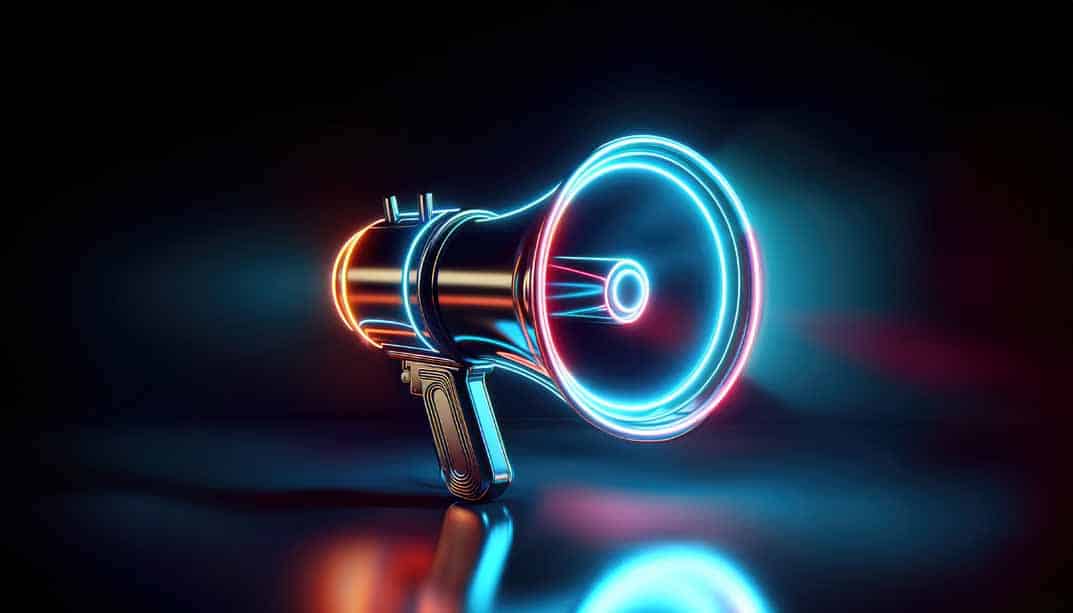
Jump to a section:
Social media is a powerful channel for raising brand awareness, nurturing customer relationships, and driving traffic to your website or online store. The key is understanding which networks your audience prefers and tailoring content that resonates, whether you’re aiming for playful engagement or professional thought leadership.
Company & Brand Overview (example)
The short example below illustrates how a business might describe itself in the context of social media marketing. This example will not go beyond this section or represent a real client scenario.
Urban Blend Café is a small but growing chain of local coffee shops in an urban region. Our identity centers on modern, cozy spaces and artisan coffee sourcing. We want to use social media to expand our audience beyond walk-in foot traffic, highlight new specialty drinks or desserts, and create an active online community of coffee lovers. Our brand voice is warm, upbeat, and visually driven—perfect for platforms like Instagram and TikTok.
Urban Blend Café hopes to deepen relationships with current patrons, lure new coffee enthusiasts with mouthwatering pictures and short behind-the-scenes videos, and differentiate our vibe from big-name coffee chains. We’ll do this by posting consistently, tapping local influencers, and leveraging interactive campaigns (like polls or user-generated content challenges).
Situation Analysis (example)
Below is a simplified example of how a business might assess its current social media setup. This is just a framework—please adapt it to reflect your own situation.
Internal Factors
- Existing Social Accounts but Irregular Posting: Urban Blend Café has accounts on Facebook and Instagram with decent content but no consistent schedule. Other networks (e.g., TikTok, LinkedIn) are dormant.
- Limited Staff Time for Engagement: Only one barista occasionally handles social media, limiting real-time responses or creative expansions.
- Good Visual Assets: The café invests in nice latte art and cozy ambiance shots, but lacks a video-oriented approach or behind-the-scenes barista stories.
- Moderate Brand Recognition: Locals appreciate the café’s laid-back vibe, but many city dwellers remain unfamiliar. There’s opportunity for digital growth to drive more visitors from other neighborhoods.
External Factors
- Dense Local Competition: Numerous coffee shops are equally active on social media, showcasing deals and new flavors. Capturing attention requires a distinctive voice and visuals.
- Mobile & Visual-Oriented Audiences: Prospective customers often scroll quickly through feeds, responding best to appealing visuals, witty captions, or short videos.
- Influencer & Review Culture: Many café-goers rely on social proof, reading Google or Yelp reviews, or following local influencers for café suggestions.
- Platform Algorithm Changes: Social networks frequently alter feed algorithms, making it hard to rely on a single strategy. A diversified but coordinated approach can mitigate risks.
Market & Customer Analysis
Your social media plan revolves around knowing who you’re targeting, how to pique their interest, and which platforms they frequent. Let’s break down the broader social media landscape, your potential audience segments, and their motivations.
Social Media Landscape
Globally, over 4.5 billion people use social media, offering vast reach but also fierce competition. Short-form video (e.g., Instagram Reels, TikTok) grows rapidly, while older platforms like Facebook or Twitter maintain wide user bases for broader audiences. Brands that engage with creative, platform-specific content see increased loyalty and brand recall.
Potential Audience Segments
- Local Neighborhood Followers: Residents living near the café who want updates on new menu items or events. They might follow the store for daily deals or community involvement.
- Coffee Enthusiasts & Foodies: Often enjoy behind-the-scenes content, barista tips, or new brew methods. They’re likely to share aesthetically pleasing latte art photos with friends.
- Influencer & Blogger Community: Micro-influencers focusing on local dining or lifestyle. They can generate hype by reviewing new drinks or featuring the café in “best coffee shops” lists.
- Students & Remote Workers: People searching for cozy workspaces. They value announcements on Wi-Fi, seating availability, or membership deals (like discount refills).
- Tourists & Weekend Explorers: Out-of-towners who might discover the café on a “top spots in the city” search. Social media geotags or hashtags can grab their attention.
Audience Motivations & Pain Points
- Visual Stimulation & Inspiration: People love stunning latte shots or café aesthetics, especially on Instagram.
- Authentic Engagement: They want genuine interactions, like timely DMs, fun polls, or personal barista stories—rather than sterile ad copy.
- Deals & Convenience: Students or casual shoppers watch social media for flash sales, freebies, or event invites, especially if they can easily redeem them.
- Overwhelming Platform Noise: Users scroll quickly. Content lacking immediate intrigue or an emotional connection may go unnoticed.
Marketing Objectives
Well-defined goals will help you measure success. Here are some possible social media marketing objectives for a local café:
- Boost Brand Awareness & Reach: Increase total social media followers by 50% across platforms in the next 6 months.
- Enhance Engagement Rates: Achieve a 5% engagement rate (likes, comments, saves) on Instagram and at least 10 story replies or poll responses weekly.
- Drive Foot Traffic from Social: Grow the number of in-store purchases traceable to social promos (like a special code or mention) by 30% within 9 months.
- Increase User-Generated Content (UGC): Encourage at least 50 new customer posts tagged at your location monthly, possibly with a unique hashtag.
- Foster Partnerships & Influencer Collaborations: Team up with 3 local micro-influencers or bloggers per quarter for content co-creation, aiming to reach new demographics.
Marketing Strategy
This social media plan should emphasize a unified brand voice, consistent posting cadence, and proactive community-building. We’ll also consider how to adapt content types (images, videos, stories) to each platform’s unique features and audience habits.
Brand Voice & Visual Identity
Define a tone—friendly, casual, witty, or informative—consistent across captions, stories, or comments. If you use color filters, fonts, or signature angles for coffee photography, keep them uniform so followers instantly recognize your content in crowded feeds.
Platform Selection & Content Types
- Instagram: Ideal for high-quality photography of beverages, snacks, décor, barista highlights, and short Reels featuring behind-the-scenes.
- Facebook: Good for local event announcements, promotions, and targeting older or family audiences. Encourage check-ins.
- TikTok: Short, playful videos showing latte art tutorials, coffee-making challenges, or comedic staff interactions could go viral if done right.
- Twitter (X): Quick updates, daily special announcements, or witty brand banter with local businesses.
- LinkedIn: If you also want corporate customers (catering or meeting space usage), share business-related updates or highlight employee stories, focusing on brand culture and achievements.
Content Calendar & Frequency
- Posting Schedule: Aim for at least 3–5 posts weekly on Instagram/Facebook. Possibly daily stories for ephemeral content. On TikTok, shoot for 1–2 short videos weekly.
- Topic Variety: Mix product promos (new latte flavors), brand stories (local coffee bean sourcing), user-generated content (customer pics), and behind-the-scenes glimpses (staff intros, roastery footage).
- Seasonal Themes & Specials: Plan monthly content arcs (e.g., “Summer Chillers,” “Fall Spices”) and coordinate with in-store marketing for synergy between online and on-site experiences.
Influencer & Community Engagement
- Micro-Influencer Collaborations: Partner with local bloggers, college student influencers, or city lifestyle accounts. Provide them with free tasting sessions or a small sponsorship to generate honest coverage.
- Contest & UGC Campaigns: For instance, “Share a pic of your favorite coffee moment, tag us, and use #UrbanBlendMoment for a chance to win a free drink for a month.” This fosters brand ambassadors.
- Live Engagement & Replies: Respond to comments or DMs swiftly—“Thank you for stopping by!” or “So glad you love our hazelnut latte!”—to show genuine interest in follower feedback.
Paid Advertising & Promotions
- Targeted Social Ads: For example, run a Facebook/Instagram ad aimed at local residents within a 5-mile radius promoting a new dessert or buy-one-get-one coffee coupon.
- Lookalike Audiences: Upload your loyalty program email list to create a “lookalike” on Facebook or Instagram, reaching new potential customers with similar traits.
- Seasonal Ad Bursts: For major calendar events (Valentine’s Day, back-to-school, winter holidays), intensify ad spend. Showcase timely flavors or special deals, driving holiday foot traffic.
Marketing Mix / Tactics
Product
- Specialty Beverages & Menu Items: Let your social posts revolve around each product’s story—like how it’s crafted or the unique beans or syrups used.
- Take-Home Merchandise: Advertise branded mugs, coffee bean bags, or gift cards as part of your feed. Possibly do short videos on how to brew at home using your beans.
- Events & Experience: If you host live music nights or barista classes, highlight them frequently, encouraging sign-ups or FOMO among your followers.
Price
- Promotional Bundles: Offer combos (e.g., coffee + pastry) at a small discount and heavily feature them in your social media stories or pinned posts.
- Member or Loyalty Specials: Give exclusive deals or extended happy hours for loyalty card holders. Tease them on social channels to entice new sign-ups.
- Flash Sales or Limited Discounts: Announce a “1-day online code” for discounted cold brew. Encourage immediate visits, measuring redemption to gauge success of real-time social pushes.
Place
- Physical Shop Atmosphere: Post real-time crowd shots or quiet corner snapshots. You might mention open Wi-Fi or comfortable seating to lure remote workers.
- Delivery & Pickup Options: If you integrate with delivery apps, remind social followers they can order from home. Use a consistent link in your profile or direct them to a landing page.
- Online Engagement Place: Your social feeds themselves act like “digital storefronts.” Greet new visitors with pinned highlights, a cohesive bio, and relevant story highlights (e.g., “Menu,” “Specials,” “Events”).
Promotion
- Hashtag Strategy: Combine brand-specific tags (#UrbanBlendMoment) with popular community ones (#CoffeeLovers, #CafeVibes). Encourage customers to adopt them.
- Polls & Interactive Stories: Instagram/Facebook story polls for next seasonal flavor or Q&A about recommended pairings create a sense of inclusion and fun.
- Cross-Promotions with Nearby Businesses: If your coffee shop is near a bookstore, do a joint giveaway or special discount with them. Tag each other’s audience to expand reach.
- Reviews & Testimonials: Share or reshare short customer endorsements. Thank them publicly, highlighting your brand’s friendly approach.
Budget & Resource Allocation
A suitable budget for social media marketing depends on your store size and growth ambitions. Here’s a possible outline:
- Content Creation (30%): Photography, short video filming/editing, graphics for stories or feed posts. Possibly an external freelancer or small in-house team.
- Paid Ads & Promotions (25%): Facebook, Instagram, or TikTok campaigns, occasional influencer fees, or boosted posts to targeted audiences.
- Influencer & Partnership Activities (15%): Budget for micro-influencer deals, free product trials, or co-branded events with local artists or businesses.
- Social Media Tools & Software (10%): Scheduling platforms, analytics tools, or services like Linktree or shortlink providers for better user navigation.
- Loyalty & Referral Program Integration (10%): Tools to track or reward social media-based referrals, custom redemption codes.
- Contingency (10%): Unexpected campaign opportunities, last-minute changes, or if a post suddenly goes viral and you decide to ramp up push to capitalize on momentum.
Timeline & Implementation
Below is a hypothetical 12-month plan for executing and optimizing your social media marketing initiatives.
Months 1–3
- Brand & Content Strategy Setup: Decide brand voice, visual style, posting frequency. Identify main platforms (Instagram & Facebook to start, possibly TikTok).
- Baseline Metrics & Goals: Record your current follower counts, average engagement, and typical weekly traffic from social.
- Initial Content Calendar & Training: If staff members are new to social media, hold short training on brand guidelines, hashtag usage, and basic photography tips.
Months 4–6
- Campaign Launch (Seasonal or Thematic): Possibly a “Summer Coolers” theme. Post daily or every other day with behind-the-scenes videos, daily specials, or short barista features.
- Influencer Collaboration Start: Invite 2–3 local micro-influencers for free tasting. They share experiences in short reels or stories. Evaluate resulting engagement or new followers.
- Weekly Analytics Review: Check which posts get the most likes or shares. Tweak content approach. If short videos do better than static images, plan more video content.
Months 7–9
- Paid Ad Scaling: Boost best-performing content with a moderate budget. Target local demographics or coffee-related interest groups.
- User-Generated Content Contest: Encourage customers to snap photos enjoying your new pastry line, tag your account, and use a unique hashtag. Winner might get a gift card or free coffee for a week.
- Refine & Expand Platforms: If you see success on IG, explore short-form videos on TikTok or cross-post IG Reels to Facebook for multi-platform synergy.
Months 10–12
- Review KPI Progress: Did you hit your follower, engagement, and foot traffic goals? If not, pivot your strategy—maybe focus on daily Instagram stories or run more interactive polls.
- Holiday-Themed Social Campaign: Show limited-time festive drinks, gift cards, or “cozy holiday nights.” Possibly partner with a local charity or hold a toy drive for added brand goodwill.
- Next Year’s Planning: Decide if you’ll venture into new content forms (like a weekly IG Live with a coffee Q&A). Evaluate staff or budget expansions if social media ROI is strong.
Key Performance Indicators
Picking the right KPIs ensures your social media efforts produce measurable results. Some relevant KPIs for a café might be:
- Follower Growth (by Platform): Check monthly increments on Instagram, TikTok, or Facebook.
- Engagement Rate: (Total engagements / total impressions) to gauge how effectively posts spark reactions.
- Click-Through Rate (CTR): On link-in-bio clicks or Facebook ad campaigns leading to your menu or promotions.
- Hashtag Mentions or UGC: Are people using your brand or campaign hashtags often? This indicates strong community involvement.
- Store Traffic & Sales from Social Promotions: Code-based or mention-based redemption. E.g., “Mention #UrbanBlendMoment at checkout and get 10% off.”
- Average Engagement / Post: Does each post consistently get likes, comments, or shares that surpass your baseline? Monitor for trending posts or dips in performance.
- Audience Growth in Target Demographics: Evaluate if you’re reaching the desired age range or location for your products (like local area students or older professionals).
Contingency Plans
Even the best social media marketing can face unexpected setbacks. Here’s a list of possible issues and ways to address them:
- Algorithm Changes: If Instagram or TikTok’s new algorithm reduces organic reach, pivot to different content types (like Reels) or increase ad budgets to maintain visibility.
- Negative Comments or Reviews: Address them promptly, politely, and if possible, offer solutions or request private discussions. This fosters transparency and willingness to improve.
- Staffing Constraints: If the staff member in charge of social media is overwhelmed, consider training an additional employee or scheduling content more systematically to maintain consistency.
- Overlooked Platform or Audience Shift: If your older audience isn’t responding well on Instagram, maybe shift emphasis to Facebook, or if younger crowds aren’t on that platform, explore TikTok or ephemeral Snap content.
- Competition’s Aggressive Offers: If a rival café uses social media for heavy discount ads, highlight your brand’s unique style, local partnerships, or quality. Possibly do short-term promotions emphasizing a different advantage (like “free dessert with a coffee purchase on weekends”).
Preparedness and flexibility keep your brand resilient, letting you swiftly adapt to changes in the social media environment or consumer preferences.
Conclusion
A successful social media marketing plan involves strategic planning, creative storytelling, and consistent, engaging interactions that delight your audience. By clarifying your brand personality and focusing on the right platforms (where your customers are most active), you can cut through the noise and foster genuine relationships. Video content, story features, and live engagements can further heighten authenticity, while promotional campaigns tie social enthusiasm back to real-world revenue and store visits.


